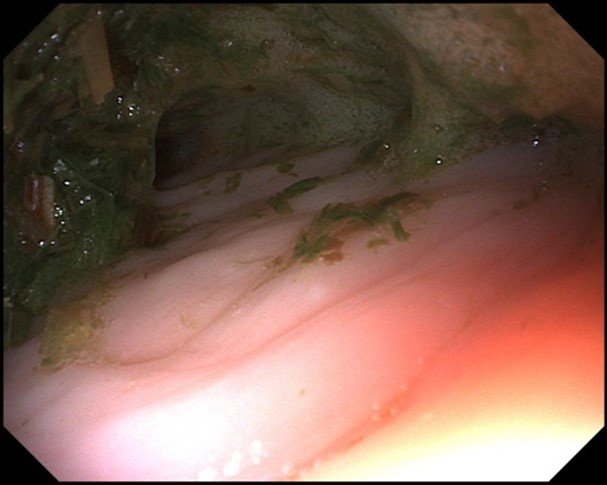The non-use of hay in feed, and the integrity of the keratinized epithelium in the stomach of non-athlete horses
DOI:
https://doi.org/10.31533/pubvet.v18n11e1684Keywords:
Endoscopy, gastroscopy, gastritis, equine gastric ulcer, equine low performanceAbstract
In order to check the gastric squamous epithelium of non-athlete horses, 37 castrated male horses were submitted to video endoscopy (gastroscopy). All animals were from the same rural property, where the horses were fed only with grass (grazing), without parasitological control, vaccination or even mineral supplementation or any form of hay. We therefore concluded, based on the findings of the gastric endoscopies, that grazing as a form of feeding for horses is extremely important, not only for general health but also for the integrity of the equine stomach mucosa.
References
Alshut, F., Venner, M., Martinsson, G., & Vervuert, I. (2023). The effects of feeding sodium chloride pellets on the gastric mucosa, acid-base, and mineral status in exercising horses. Journal of Veterinary Internal Medicine, 37(6), 2552–2561. https://doi.org/10.1111/jvim.16851.
Alves, G. E. S., Cassou, F., Aranzaléz, J.R.M. & Andrade, B.S. (2010). Quais os possíveis benefícios do descanso ou férias a pasto para equinos atletas portadores de gastropatias? Brazilian Journal of Equine Medicine, 6, 18-23
Aranzalez, J. R. M., & Alves, G. E. S. (2014). Equine gastric ulcer syndrome: Risk factors and therapeutic aspects. In Revista Colombiana de Ciencias Pecuarias (Vol. 27, Issue 3, pp. 18–23). https://doi.org/10.17533/udea.rccp.324889.
Bermejo, V. J., Zefferino, C. G., Fernandes Júnior, J. M. F., Silvério, M. R., & Prado, F. R. A. (2008). Abdômen agudo equino (síndrome cólica). Revista Científica Eletrônica de Medicina Veterinária, 7.
Blikslager, A. T. (2019). Colic prevention to avoid colic surgery: a surgeon’s perspective. Journal of Equine Veterinary Science, 76, 1–5. https://doi.org/10.1016/j.jevs.2019.02.023.
Budras, K. D., Sack, W. O., & Rock, S. (2003). Anatomy of the horse: An illustrated text. Mosby.
Fraipont, A., Van Erck, E., Ramery, E., Richard, E., Denoix, J. M., Lekeux, P., & Art, T. (2011). Subclinical diseases underlying poor performance in endurance horses: Diagnostic methods and predictive tests. Veterinary Record, 169(6), 154. https://doi.org/10.1136/vr.d4142
Houston, D. M., & Radostits, O. M. (2002). O exame clínico. Koogan Guanabara.
Goloubeff, B. (1993). Abdome Agudo Equino. Editora Varela. São Paulo.
Lo Feudo, C. M., Stucchi, L., Conturba, B., Stancari, G., Zucca, E., & Ferrucci, F. (2022). Equine gastric ulcer syndrome affects fitness parameters in poorly performing standard bred race horses. Frontiers in Veterinary Science, 9, 1–9. https://doi.org/10.3389/fvets.2022.1014619.
Martin Júnior, B. B., Reef, V. B., Parente, E. J., & Sage, A. D. (2000). Causes of poor performance of horses during training, racing, or showing: 348 cases (1992–1996). Journal of the American Veterinary Medical Association, 216(4), 554–558. https://doi.org/10.2460/javma.2000.216.554.
May-Davis, S., & Walker, C. (2015). Variations and implications of the gross morphology in the Longus colli muscle in Thoroughbred and Thoroughbred derivative horses presenting with a congenital malformation of the sixth and seventh cervical vertebrae. Journal of Equine Veterinary Science, 35(7). https://doi.org/10.1016/j.jevs.2015.03.002.
Pessoa, A. F. A., Miranda Neto, E. G., Pessoa, C. R. M., Simões, S. V. D., Azevedo, S. S., & Riet-Correa, F. (2012). Abdômen agudo em equídeos no semiárido da região nordeste do Brasil. Pesquisa Veterinária Brasileira, 32, 503–509. https://doi.org/10.1590/s0100-736x2012000600006.
Speirs, V.C. (1999). Exame Clínico dos Equinos. Editora Artmed Sul LTDA. Porto Alegre, RS. Brasil.
Sykes, B. W., Bowen, M., Habershon-Butcher, J. L., Green, M., & Hallowell, G. D. (2019). Management factors and clinical implications of glandular and squamous gastric disease in horses. Journal of Veterinary Internal Medicine, 33(1), 233–240. https://doi.org/10.1111/jvim.15350.
Sykes, B. W., Hewetson, M., Hepburn, R. J., Luthersson, N., & Tamzali, Y. (2015). European college of equine internal medicine consensus statement - equine gastric ulcer syndrome in adult horses. Journal of Veterinary Internal Medicine, 29(5), 1288–1299. https://doi.org/10.1111/jvim.13578.
Thomassian, A. (2005). Enfermidades dos cavalos. Livraria Varela.
Thompson, R. N., Pearson, E., McDonough, S. P., Iannitti, H., Van de Walle, G. R., Banse, H., Perkins, G. A., & Tomlinson, J. E. (2024). Equine gamma herpesvirus presence and viral load are not associated with equine glandular gastric disease. American Journal of Veterinary Research, 85(6), 1–9. https://doi.org/10.2460/ajvr.23.12.0282.
Vasconcellos, L. A. S. (2024). Recurrent equine laryngeal alteration associated with compression of nerves in the infra-auricular region similar to Eagle Syndrome in humans: Case report. PUBVET, 18(9), 1–5. http://dx.doi.org/10.31533/pubvet.v18n09e1649
Vasconcellos, L. A. S. (2022). Neurologia e neurocirurgia equina: Princípios gerais. Editora Lusófona.
Vasconcellos, L. A. S. (2024). Morphological irregularity of tracheal rings in horses, associated or not with cervical malformation: Initial study. PUBVET, 18(5), 1–4. https://doi.org/10.31533/pubvet.v18n05e1588.
Zibetti, F. L., Silva, E. G., Rocha, M. M., Alves, C. C., Rosa, B. M., Fernandes, D. W., Leão, M. S., Soares, M. A., Vasconcellos, A. L., & Costa, P. P. C. (2021). Gastropatia hipertrófica pilórica crônica: Revisão. PUBVET, 15(12), 1–6. https://doi.org/10.31533/pubvet.v15n12a982.1-6.

Downloads
Published
Issue
Section
License
Copyright (c) 2024 Luiz Alberto da Silva Vasconcellos

This work is licensed under a Creative Commons Attribution 4.0 International License.
Você tem o direito de:
Compartilhar — copiar e redistribuir o material em qualquer suporte ou formato
Adaptar — remixar, transformar, e criar a partir do material para qualquer fim, mesmo que comercial.
O licenciante não pode revogar estes direitos desde que você respeite os termos da licença. De acordo com os termos seguintes:
Atribuição
— Você deve dar o crédito apropriado, prover um link para a licença e indicar se mudanças foram feitas. Você deve fazê-lo em qualquer circunstância razoável, mas de nenhuma maneira que sugira que o licenciante apoia você ou o seu uso. Sem restrições adicionais
— Você não pode aplicar termos jurídicos ou medidas de caráter tecnológico que restrinjam legalmente outros de fazerem algo que a licença permita.




